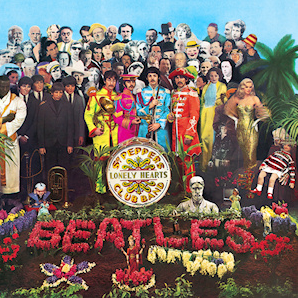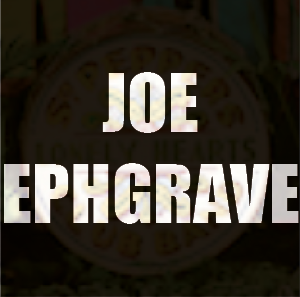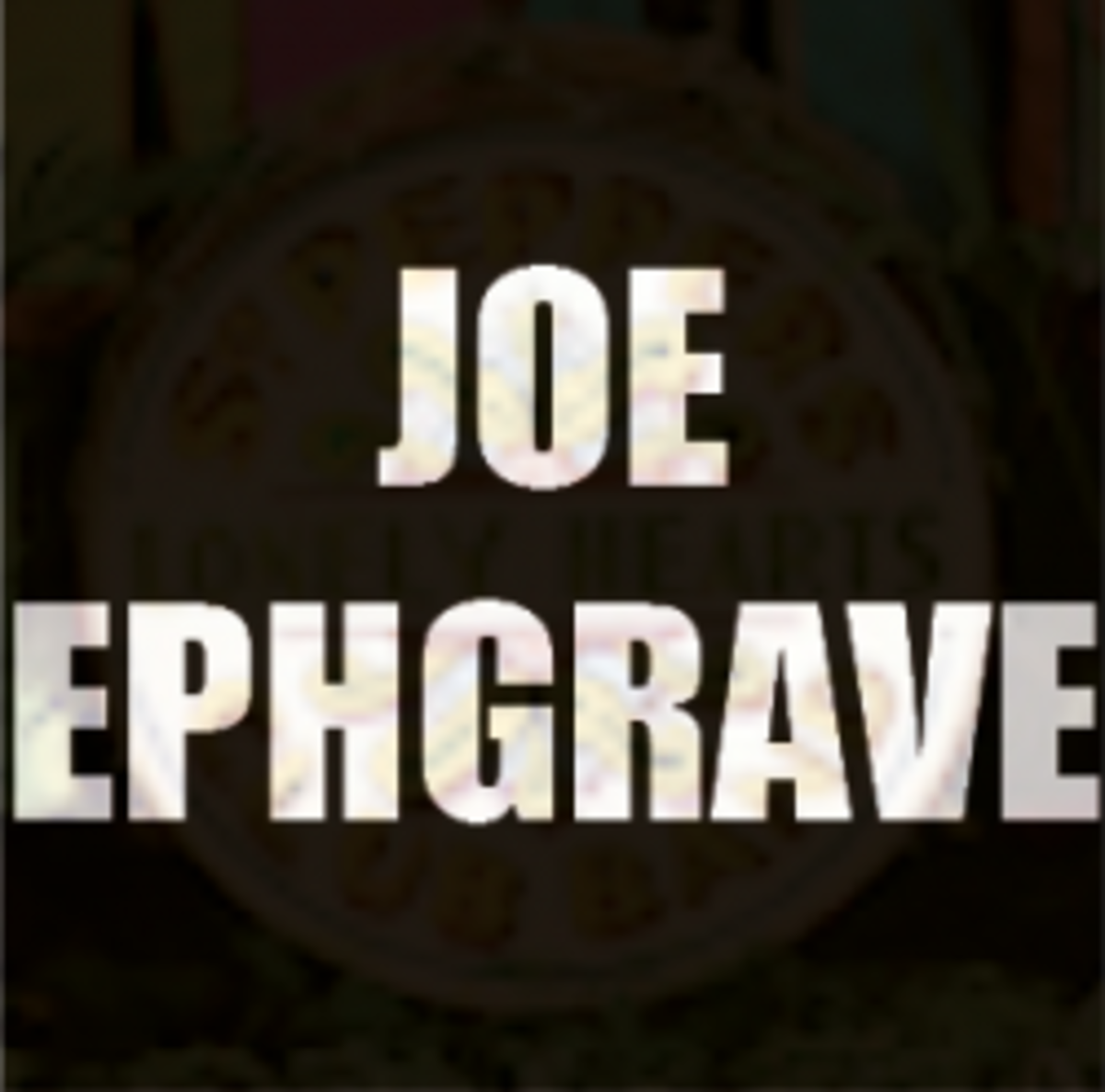Peter Blake

Was Peter Blake part of the conspiracy?
Well, before we get onto that, let's find out exactly who Peter Blake is.
This article is part of my series about designers you may not have heard of, but whose work you are likely to know very well indeed. Others are Klaus Voorman and Joe Ephgrave and yes, the three are strangely connected. (See below for details).
Like the other two designers, British artist Peter Blake produced at least one piece of artwork that I'm sure will be familiar to you. During the nineteen sixties he was at the height of his fame as a pop artist.
He created what is more than likely his most famous work in 1969. It was typical of his style of the day. But this artwork also became the root of a huge hoax or conspiracy theory that persists to this day. Was he a part of it?
Images © BritFlorida. Image below is from Wikimedia Commons.

Was Peter Blake aware of the way this would be interpreted?
Yes, this is the piece of artwork for which he is famous.
Since he is a respected artist who was knighted for his work in 2002, that might be a little galling to him, but the fact remains.
What's interesting is that a couple of years later a rumour started in America that persists to this day.
There are many people who seriously believe that Paul McCartney died in 1966 in a road accident and that his place was taken by a double.
These theorists invariably point to the Sgt. Pepper's Lonely Hearts Club Band album - and its cover - as providing definitive clues. If this was the case, then was Blake in on the hoax?

The Sgt Pepper's cover
The credit for the idea for the cover is generally thought to be Paul (or if you're a conspiracy theorist, his lookalike).
He knew Blake, having been introduced to him by mutual friend, a photographer.
Each member of the group suggested people they admired who should be portrayed in the crowd. (Evidently one of John Lennon's suggestions - more than likely tongue-in-cheek - of Adolf Hitler was vetoed by the record company).
For Blake, well-known as a pop artist, art was now truly meeting pop and it was a revolutionary design in many ways.
These are just a few of the clues that, a couple of years later, the theorists believed 'proved' to the world that the Paul we see here was stand-in and that the real McCartney was dead.
- The flowers in the foreground are a grave
- Paul is holding a black instrument
- He has a hand over his head symbolizing a religious blessing
- He is facing forwards whereas the others are slightly angled
- The yellow flowers supposedly spell 'Paul'
- On the waxwork Beatles, Ringo looks distressed
- There is a bloodsoaked doll
.
There are many more but the clincher - for the theorists - is the drum. See the article about Joe Ephgrave to learn more.
Some of the more bizarre clues and assertions
It wasn't just Blake's cover that attracted attention from the theorists. Subsequent covers did too. But the aspect that truly amazes me is that, if this conspiracy was true, how is it that everyone kept quiet about it for so many years? I find it incredibly hard to believe that not a single friend or family member would notice the substitution.
Is Paul McCartney dead?
- It seems to me that once people have developed a theory, they will see almost anything as a clue. One that is always mentioned is that post 1966 photographs show Paul holding a cigarette in his right hand. 'Ah' they say 'The real Paul was left-handed.' It's true that he was but as a left-hander, I can assure you that most left-handed smokers use their right hand - they need the left for writing and so on.
- I think that it's truly remarkable that the perpetrators (usually thought to be the Beatles themselves) managed to find doppelganger who looked the part, had the right voice, had great musical ability and also an excellent knowledge of Beatles history, going back to the 1950s. I find it hard to believe that not a single friend or family member noticed.
- The cover of the Abbey Road album was a complete treat for theorists. Evidently the fact that Paul was wearing no shoes was highly suggestive to them. Also the registration number of a parked car was 28 IF - indicating that Paul would have been 28 if he'd lived. (Untrue, he would have been 27). The funniest is that there is a car in the distance that is heading straight for Paul - actually it's driving away, the British drive on the left.
- Similarly, the 'huge' clue on the drum of the Sgt Pepper's cover suggests that Paul died on November 9th (see the Joe Ephgrave article). This is because, by a long stretch of the imagination, the figures indicated 11.9. But the British write the day before the month so in actual fact, it would be September 11th.
- Probably one of the most peculiar assertions of the theorists is that Jane Asher broke of her engagement to 'Paul' after he had 'died'. (I know that makes no sense but you know what I mean). In fact, their relationship began in 1963 and Paul lived in her family home. Strangely, the lookalike was accepted by her, and her family. She went to India with Paul in 1967 (after he had 'died') and they remained engaged until the summer of 1968.
- The Sgt Pepper album cover was the first to have a feature that has been commonplace ever since - the lyrics printed out. Theorists say that on the lyrics page, George Harrison is pointing to 'Wednesday morning at 5 o'clock' (from She's Leaving Home) and that's the time Paul died. And yet they also say that the accident happened in the evening when Paul drove away from a recording session after an argument. You can't have it both ways.
- Where it gets really bonkers is when the urban legend 'the vanishing hitchhiker' is cited. The story goes that Paul picked up a young girl who was hitching. When she realised who the driver was,she flung herself at him, thus causing the accident. She too was supposedly killed.Who was she? What about her family and friends? No theorist has ever come forward with a missing persons report for the mythical hitchhiker.
See for yourself


Joe Ephgrave
This person - if he existed - created the major 'clue' that the theorists love so much. You'll have gathered by now that I think the conspiracy theory is a complete hoax, perpetrated by who knows who. ( It is said to have been started in the USA).
Some people say that it was the Beatles themselves who created the whole thing as a publicity stunt. It's true that if a doppelganger had been used, then the rest of the group would have to be in on the secret. It was Peter Blake and his wife, Jann Haworth, who supposedly employed him to do this job.
But who was Joe Ephgrave and why is there no evidence of his existence?

Klaus Voorman
There is no doubt about the existence of this graphic designer who produced several album covers for the Beatles. The reason he is interesting though, when it comes to the subject of the hoax, is that he first met the group when they were performing in Hamburg at the beginning of the sixties.
He became a good friend and remained in touch with them - and still is. There is a relatively recent video on YouTube of him jamming with Paul McCartney.
As a close friend from the earliest days, wouldn't he have noticed over the years that his friend wasn't the real Paul? How amazing it is that the lookalike has all Paul's memories and was never caught out.
See the cover being created
If you've read the article about Joe Ephgrave, then you'll know that two drum skins were created; the one you see on the album cover and the one you see on this video (at 1.45, 2.37 and 2.47). I'd be willing to bet that the conspiracy theorists have studied this closely. What's significant is that there is no suggestion anywhere that this also contains a hidden message. Hmm.
Decide for yourself. Was there a conspiracy theory?


Related
- Nowhere Boy: John Lennon's early life - review
Does anyone really know the truth about John Lennon's early life? This film is as accurate as they come. As a Beatles 'historian', I can thoroughly recommend this fabulous film to all - fan or not. - John Lennon: Will we ever know the truth?
Will we ever know the truth about John Lennon's life? There are so many contradictory books and articles about him. Who are we to believe? - Who was Julia Stanley?
You might not know the name. But I suspect that the world would be a different place had she not existed. Yet she was just an ordinary girl from northern England. I promise, you'll know who she was.








